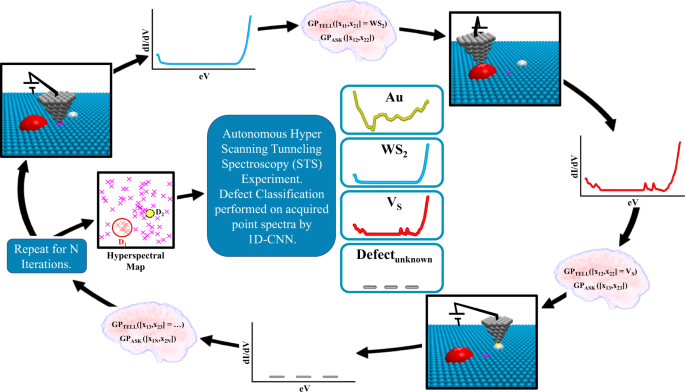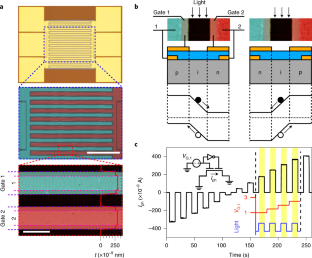人工知能を活用した新しいアプローチで、自動化された実験を補強する New approach leverages artificial intelligence to augment automated experiments
2022-08-25 ローレンスバークレー国立研究所(LBNL)
AIと自律的な発見を組み合わせたアプローチを考案した。この組み合わせにより、欠陥のスクリーニングとその測定が可能になった。
<関連情報>
- https://newscenter.lbl.gov/2022/08/25/2d-materials-for-quantum-and-electronic-devices/
- https://www.nature.com/articles/s41524-022-00777-9
WS2およびAu{111}の自律走査型プローブ顕微鏡による研究 Autonomous scanning probe microscopy investigations over WS2 and Au{111}
John C. Thomas,Antonio Rossi,Darian Smalley,Luca Francaviglia,Zhuohang Yu,Tianyi Zhang,Shalini Kumari,Joshua A. Robinson,Mauricio Terrones,Masahiro Ishigami,Eli Rotenberg,Edward S. Barnard,Archana Raja,Ed Wong,D. Frank Ogletree,Marcus M. Noack & Alexander Weber-Bargioni
npj Computational Materials Published:02 May 2022
DOI:https://doi.org/10.1038/s41524-022-00777-9

Abstract
Individual atomic defects in 2D materials impact their macroscopic functionality. Correlating the interplay is challenging, however, intelligent hyperspectral scanning tunneling spectroscopy (STS) mapping provides a feasible solution to this technically difficult and time consuming problem. Here, dense spectroscopic volume is collected autonomously via Gaussian process regression, where convolutional neural networks are used in tandem for spectral identification. Acquired data enable defect segmentation, and a workflow is provided for machine-driven decision making during experimentation with capability for user customization. We provide a means towards autonomous experimentation for the benefit of both enhanced reproducibility and user-accessibility. Hyperspectral investigations on WS2 sulfur vacancy sites are explored, which is combined with local density of states confirmation on the Au{111} herringbone reconstruction. Chalcogen vacancies, pristine WS2, Au face-centered cubic, and Au hexagonal close-packed regions are examined and detected by machine learning methods to demonstrate the potential of artificial intelligence for hyperspectral STS mapping.



